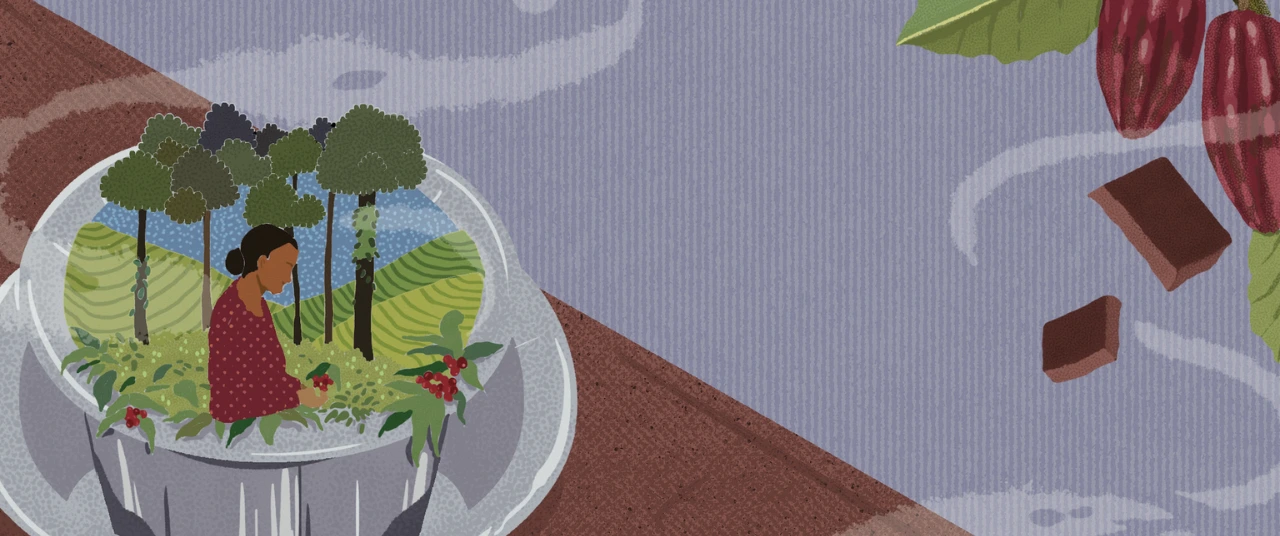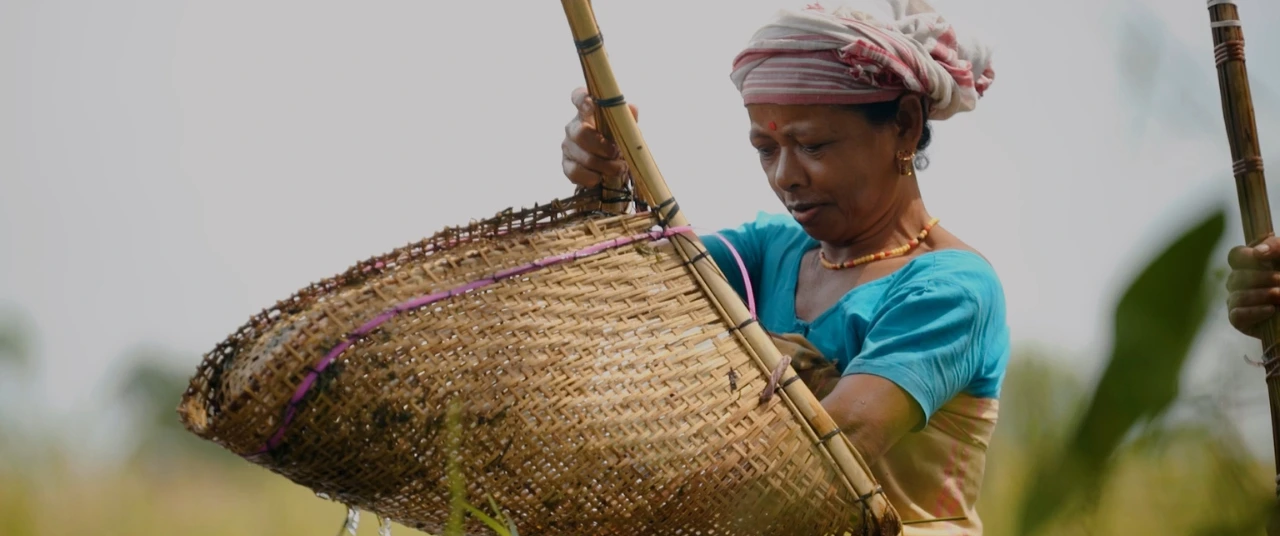Are farmers buying the government's claims?






As Maharashtra prepares for its elections, the focus isn't just on who will win; it’s also on a crucial decision that could impact the state’s farmers. Deputy chief Minister Ajit Pawar has promised that a decision on raising the Minimum Support Price (MSP) for crops will come soon. This has farmers feeling both hopeful and worried, especially after the intense protests that rocked the nation not long ago.
Important political leaders, like India’s agriculture minister Shivraj Singh Chouhan, are talking with representatives from various farmers’ groups to establish a legal guarantee for MSP. Meanwhile, Gujarat’s agriculture minister Raghavji Patel announced that they will start buying groundnut, moong, urad, and soybean at the MSP from November 11. Despite these promises, the main concern remains: can farmers trust the government to ensure they receive a fair price in an industry that often leaves them in debt?
In June 2024, the centre raised the MSPs for all 14 crops by 1-13% as market proxies for agricultural produce surged due to inflation. Sakshee Jaimini, a development practitioner at the Revitalising Rainfed Agriculture Network, discussed the pain points in the current system and the need for a decentralised operating model. She said, “The farmers who are protesting want to decide the MSP themselves, like other products in the market. There is a disparity amongst the farming community.”
%2520(21%2520x%252021%2520cm).avif)
In a country where its largest sector struggles with low income and where many farmers are deep in debt, securing fair prices for produce is a fundamental challenge. Official data shows that the average monthly income of a farmer household was Rs 10,218 in 2019, with some states like Jharkhand, Odisha, and West Bengal reporting as low as Rs 4,800.
Understanding MSP
MSP is the minimum rate at which farmers sell their produce to the government through mandis. Introduced in 1987, it protects farmers from market fluctuations and provides stability and income security. The Commission for Agricultural Costs and Prices (CACP) recommends the MSP based on various factors, with the Cabinet Committee on Economic Affairs, led by the prime minister, making the final decision.
The MSP is calculated using specific parameters, including A2, FL, and C2 costs. The A2 cost covers out-of-pocket expenses for farming, such as chemicals, fertilisers, seeds, hired labour, fuel, and irrigation.
The FL cost accounts for the unpaid labour provided by family members for activities like sowing, weeding, and harvesting. Together, A2 and FL costs represent the total production cost incurred by farmers.
C2 is the most comprehensive cost, factoring in A2 and FL costs alongside land rentals and interest on fixed assets like machinery, buildings, and equipment. Besides the operational costs, it also considers the cost of capital and land.
The CACP recommends the MSP by evaluating cultivation costs per hectare, production costs per quintal, market prices, production and labour costs, demand for the crop, per capita consumption, and industry trends. The government sets support prices at 1.5 times the production cost, ensuring farmers receive a minimum of 50% returns.
Farmers’ demands
In the light of large scale farmers agitation during 2020 and 2021, the India government withdrew the controversial agricultural bills.
Farmers –primarily from Punjab and Haryana–marched to Delhi to protest the opening of the sector to private players. They feared that corporate entry would reduce the government’s role in agriculture and lead to the withdrawal of MSPs.

Currently, there are MSPs for 22 commodities: seven cereals (paddy, wheat, maize, sorghum, pearl millet, barley, and finger millet), five pulses (gram, toor or pigeon peas, moong or green gram, urad or black lentil, lentil), seven oilseeds (groundnut, rapeseed-mustard, soybean, sesamum, sunflower, safflower, and niger), and three commercial crops (copra, cotton, and raw jute).
According to studies, only a small share of farmers in the country benefits from MSPs. Farmers have accused the government of delaying its commitments to address their demands, despite earlier promises made during the protests.
For the current season, the government has started procuring crops at the Minimum Support Price as it has done in the past. However, some farmer groups are still protesting because they feel that the government is not really listening to their concerns and addressing their demands properly.
The farmers' demands are not extreme or unreasonable; they have been getting the MSP for almost six decades now. All they want is for the government to be fair and give them a promised return on their crops.
Indian agriculture has long suffered from negative terms of trade. Instead of supporting farmers, the state policy of keeping food prices low imposes negative subsidies on them.
Millet challenges
The Food and Agriculture Organization (FAO) declared 2023 as the International Year of Millets, but millet farmers have yet to see the benefits. Jaimini, a millet farming specialist, said, “Even though there is MSP [for millets], there is no procurement because there are no support systems built for farmers to cultivate those crops.”
She pointed out that the Green Revolution historically favoured paddy over millets. “Even though the International Year of Millets [2023] happened, the overall development is low,” she added.
Last year, India’s finance minister Nirmala Sitharaman referred to millets as ‘Shree Anna’ in her budget speech. While promoting the nutritive value of millets led to a surge in their market and attracted start-ups, little has changed for farmers.
“Almost 70% of the money allotted to the Indian Institute of Millets Research was spent on building infrastructure for the research centre,” Jaimini said. Moreover, current research focuses on fortifying millets, which is unnecessary since they are already nutritious.
She worries that millets will face the same fate as paddy. “The institute will create certain seed varieties that will increase farmers’ dependency on them. On the other hand, market systems are so rigid regarding one colour, one shade, one taste that we cannot even brand different millet varieties,” said the Youth For India fellow.
Simply having an MSP will not resolve the issue, Jaimini said. “There is a systematic change and intervention that is required, like paddy, but not in a similar fashion.” She suggested focusing on increasing scale while building decentralised systems.
State intervention
The state actively intervenes to establish minimum wages and regulate maximum retail prices for consumer goods. One might reasonably ask: why not extend similar protections to farmers?
The MSP serves as a modest return for the systemic extraction farmers endure in the economy. The ongoing struggle for equal treatment has led farmer unions to demand not just survival but recognition and justice in a system that often overlooks their plight.
{{quiz}}
Explore other topics
References
1. Ajit Pawar. (2024). Maharashtra assembly elections 2024: Decision on MSP for agri produce to come soon. https://www.deccanherald.com/elections/maharashtra/maharashtra-assembly-elections-2024-decision-on-msp-for-agri-produce-to-come-soon-says-ajit-pawar-3210187
2. Chouhan, S. (2024). We will work it out: Chouhan holds talks with farmers on MSP. https://www.hindustantimes.com/india-news/we-will-work-it-out-chouhan-holds-talks-with-farmers-on-msp-101727205245517.html
3. Gujarat Government. (2024). Gujarat govt to buy groundnut, moong, urad, soybean at MSP for 90 days from Nov 11. https://deshgujarat.com/2024/09/30/gujarat-govt-to-buy-groundnut-moong-urad-soybean-at-msp-for-90-days-from-nov-11/
4. Gupta, P., Khera, R., & Narayanan, S. (2021). Minimum support prices in India: Distilling the facts. Review of Agrarian Studies. http://ras.org.in/minimum_support_prices_in_india
5. Lokmarg. Understanding the mandi system in India. Retrieved from https://lokmarg.com/understanding-the-mandi-system-in-india/
6. Wikipedia contributors. (2023). Sesamum. In Wikipedia, The Free Encyclopedia. Retrieved from https://en.wikipedia.org/wiki/Sesamum
7. Wikipedia contributors. (2023). Niger seed. In Wikipedia, The Free Encyclopedia. Retrieved from https://en.wikipedia.org/wiki/Niger_seed
8. Indian Ministry of Finance. (2023). Budget speech 2023-24. https://www.indiabudget.gov.in/doc/bspeech/bs2023_24.pdf
9. Sunday Guardian Live. (2024). India saw 80+ new startups in millet sector in past year and a half. https://sundayguardianlive.com/business/india-saw-80-plus-new-startups-in-millet-sector-in-past-year-and-a-half
10. Sattva. (2023). Strengthening millet value chains. https://www.sattva.co.in/wp-content/uploads/2023/08/04082023_Perspective_Strengthening-Millet-Value-Chains.pdf







.png)



